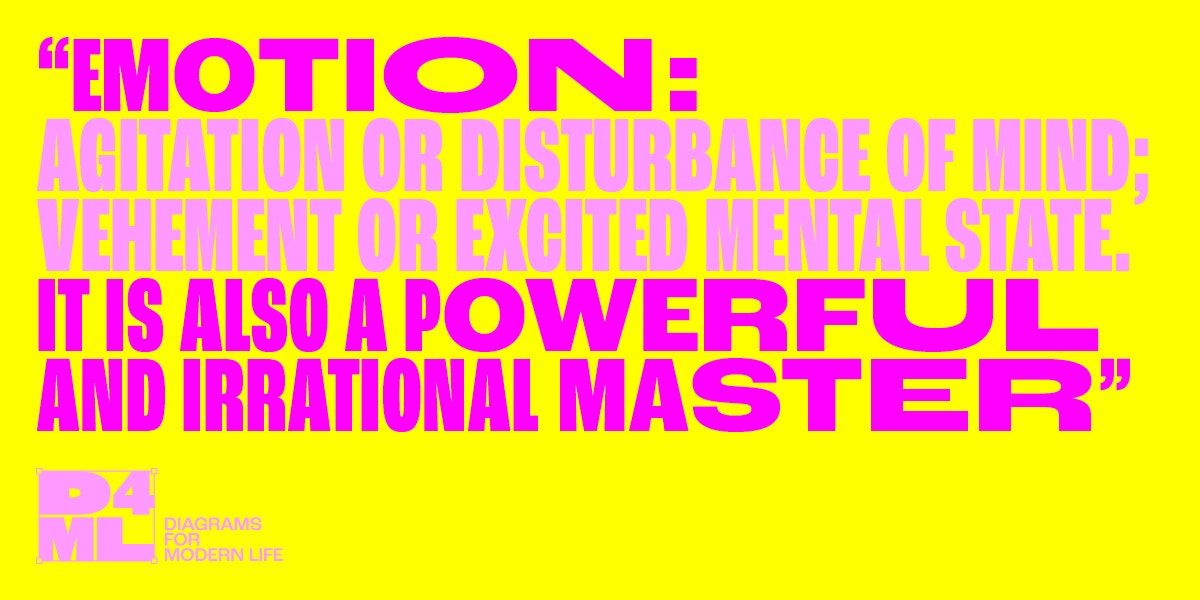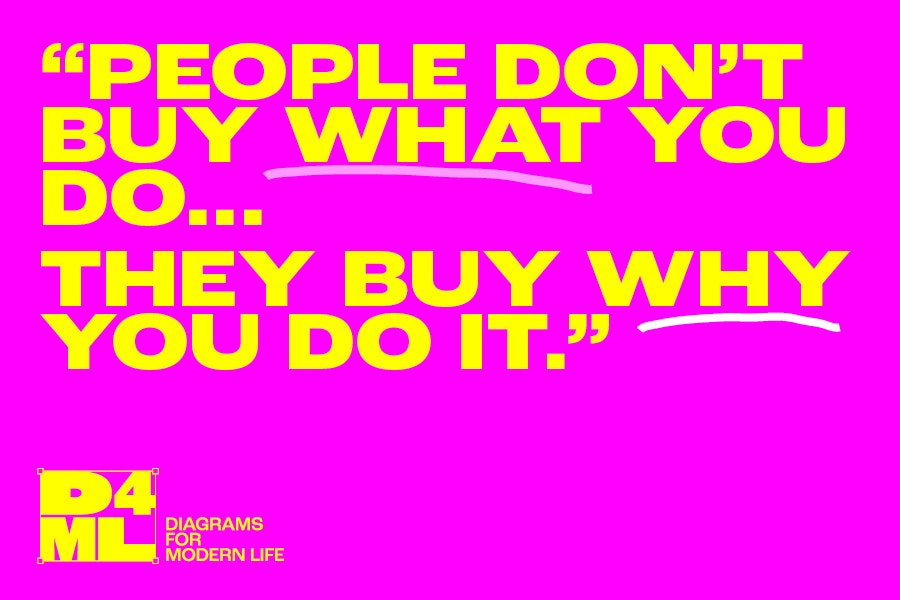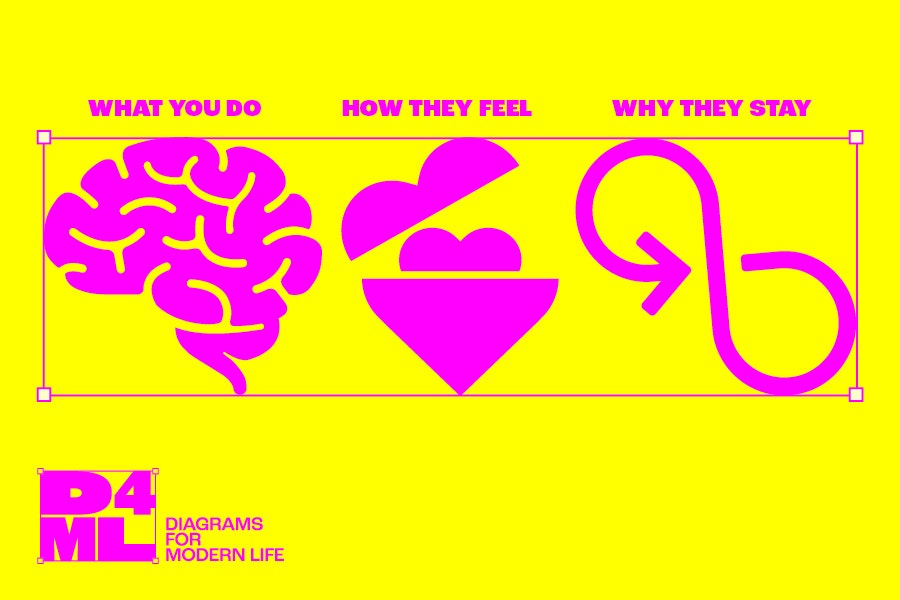Why emotion matters in branding and how to harness it | Blog
Marketing Man
@10:12, 06.05.2025

What really sets one brand apart from another? It’s not budget, tech, or even strategy - it’s the ability to make people feel something. And if your brand isn’t doing that, it’s missing its most powerful advantage.
“Emotion: Agitation or disturbance of mind; vehement or excited mental state.’ It is also a powerful and irrational master” - Charles Gray, RHPS
One of the few things that sets us apart from animals is our emotions, their complexity, our understanding of them, and their influence on our decision-making. They are integral to every minute of our existence, and yet, are so often forgotten about in marketing strategies. Emotion isn’t just a detail or footnote to marketing and branding - it’s foundational.
Brands that succeed aren’t necessarily those with the biggest budgets, largest potential audience or most revolutionary products. Often, they are the ones we relate to on a human level - they resonate with us emotionally. Understanding why emotion matters and how to strategically harness it can set your business apart in, let’s face it, a more competitive and ever-increasingly crowded market.

Emotion: The core of your brand's promise
At the heart of it, branding is a promise to your customers. It’s your opportunity - and usually your only one, as first impressions are critical - to articulate who you are, what you stand for, and why customers should care. These roll together to form the promise of the type of service you are offering potential customers. But a promise is only powerful if it resonates emotionally. As Simon Sinek aptly puts it, "People don’t buy what you do; they buy why you do it. And what you do simply proves what you believe." Emotion gives you that “why”..
When your brand taps into important emotions - like trust, joy, pride, or even relief - you forge stronger connections. These emotional connections drive loyalty, advocacy, and sustained growth, all of which are critical, core components to the long-term success of a brand as they mean you will very likely have returning customers. And LTV is an exceptionally hard thing to create, or at least, without the right brand story.
Think about brands like Dr. Martens, whose identity of "Rebellious Self Expression" has captured hearts and minds globally. They aren’t just selling footwear; they're championing individuality and defiance against conformity. Fashion meets philosophy to create something iconic, something both generation-defining yet timeless. It’s powerful because it connects deeply with the emotions of their audience.

Why emotion is essential in marketing
Emotion influences decision-making far more than cold, rational considerations alone - see what we mean? We even attach emotions to concepts like rational decision-making by making it seem uncaring. And the research conducted by countless institutions backs this up; emotional responses have greater sway on consumer choices than purely logical arguments. The stories that tug on your heartstrings or drive you to action via outrage are the ones that stick with you. By neglecting emotion, your brand risks becoming forgettable or interchangeable with the competition.
Consider the brands you currently feel passionate about. If one immediately jumps to mind, you’ve probably been a long-time customer of theirs. And chances are, your affinity for them isn’t solely based on practical considerations but on how they make you feel. Emotional branding is about deliberately creating these positive emotional experiences. It's about making customers feel seen, understood, and valued. And doing that isn’t easy - it’s why working with a company like ours should be your first port of call.

How to harness emotion effectively
So, how can your brand effectively harness emotion?
1. Understand your customer’s emotions
Before you can engage your customer's amygdala, you must deeply understand their feelings and motivations. Find the common trigger points that make someone sit up and pay attention. At Corke Wallis, this is central to our approach. We begin by gaining deep insights through working with you to understand your customers. And if needed, we conduct direct interactions - customer interviews, market research, and rigorous testing. The better you understand your audience’s emotional drivers, the more authentically you can connect.
2. Define your emotional proposition
Clearly identify the core emotional value your brand provides. Are you inspiring confidence in boat owners that your products will tell them their boat is sinking? Evoking joy in the beauty of a Milanese real estate asset? Or fostering community and care for the environment through a compact bike solution? Your emotional proposition should align seamlessly with your core business objectives and customer needs.
Take the Lion Plaza project, for example. By communicating sustainability and community-building, we didn't just market office space; we created an emotional appeal based on responsibility, optimism, and connection - making tenants feel proud to belong to a forward-thinking community.
3. Align your messaging and visual identity
Every brand interaction should reinforce your emotional proposition consistently. This means your visual identity (colours, logos, typography) and messaging (tone of voice, key phrases) should consistently evoke the intended emotion. It may sound like a no-brainer, but it is easy to veer off track, particularly as a growing team starts to get involved and, shall we politely say, less informed members of the team start to alter messaging.
Going back to Dr. Martens, for instance - we used bold visuals, powerful language, and rebellious messaging consistently across all platforms, reinforcing their emotional appeal and resonating with their audience.
4. Tell authentic stories
Humans connect naturally through stories. Authentic storytelling captures attention and makes emotional connections memorable, think back to the brand we asked you to think about that you felt passionate about. If you remember hard enough, you can probably remember the very advert or campaign that converted you from an interested party to an active consumer. Your brand’s stories - whether about your origins, customer experiences, or positive societal impact - should illustrate your emotional proposition in action.
With TAD Electronics, for instance, we used stories about their robust and reliable products that keep workers safe in challenging environments, emotionally resonating with values of reliability and safety.
5. Continuously test and refine
Emotionally resonant branding isn't a one-time task. We emphasise continuous testing and refinement as core strategic practices. Regularly engaging with both customers and stakeholders provides vital feedback, ensuring your emotional branding evolves and remains authentic. Continually building upon and improving your messaging based on emotional feedback ensures your brand remains relevant, engaging, and impactful.
A quote from Henry Ford springs to mind here, "If you always do what you always did, you will always get what you always got."

Outcomes of effective emotional branding
So we’ve gone over the why’s and how’s - what do you get out of all this hard work? Why should you engage with potential customer’s emotions? Fortunately, we’re here to tell you it's about driving measurable results:
Increased loyalty and advocacy: Customers who feel emotionally connected become repeat buyers and enthusiastic brand advocates. The value of these simply cannot be understated, they will be your best-performing (and completely free) salespeople.
Higher perceived value: Emotional connections lead customers to perceive your products and services as inherently more valuable. If you can make the customer feel like part of the journey your business is on, even better.
Stronger competitive positioning: Emotional differentiation makes your brand memorable, helping it breeze past the competition and secure sales. And if they couldn’t implement it themselves, they probably can’t understand how you achieved it
Putting emotion at the centre of your brand strategy
Emotion isn’t merely beneficial; it's essential. Brands that fail to connect with customers risk becoming irrelevant and falling behind. By putting genuine emotion at the centre of your strategy - through insight-driven understanding, authentic storytelling, and consistent emotional alignment - you create deeper connections, drive customer loyalty, and ultimately, build sustained success.
At Corke Wallis, we see emotional branding as strategic clarity in action. It is not abstract; it’s tangible, powerful, and transformative. Emotion matters deeply - make sure your brand uses it effectively.
